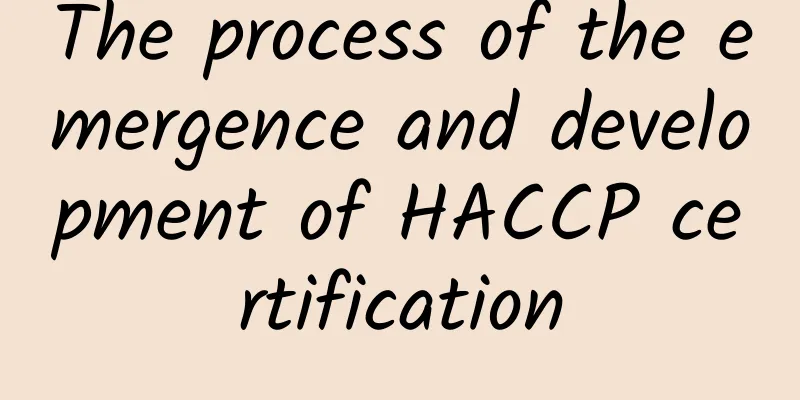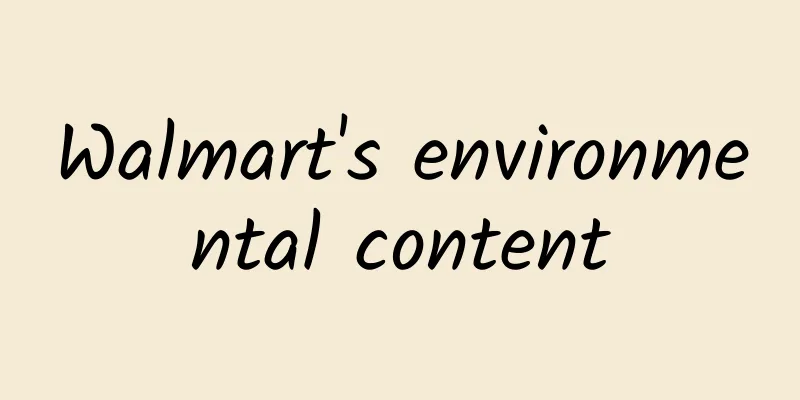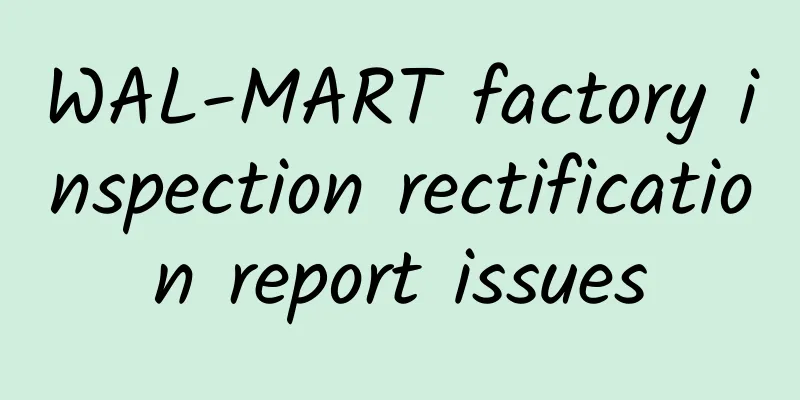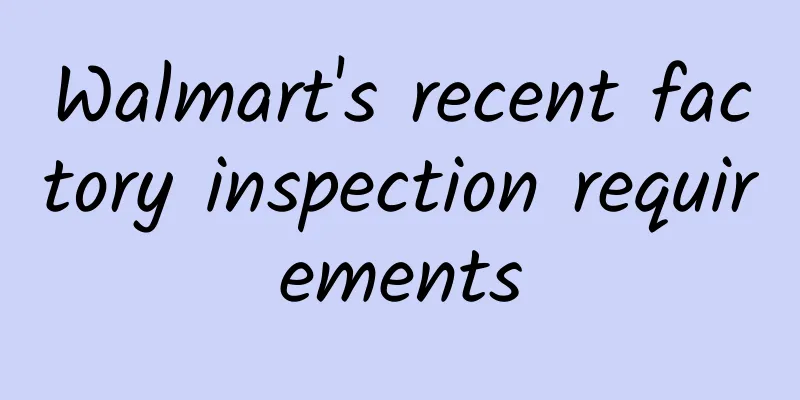|
HACCP certification is the abbreviation of Hazard Analysis and Critical Control Point , which has become a concept widely used in the global food industry, especially in the aquatic industry.
The national standard GB/T15091-1994 "Basic Terms of Food Industry" defines it as : a means of controlling the production ( processing ) of safe food ; Analyze key production processes and human factors that affect product safety , identify key links in the processing process , establish and improve monitoring procedures and standards , and take standardized corrective measures. Synonyms : HACCP certification.
The international standard CAC/RCP-1 " General Principles of Food Hygiene 1997 Revised 3rd Edition " defines HACCP certification as: a system for identifying, evaluating and controlling hazards that are critical to food safety.
1. The emergence and development of HACCP certification is related to modern food safety
Due to the continuous deterioration of the land, ocean, rivers and lakes on which we depend for survival , the harm suffered by aquatic products can be described as " besieged on all sides " . These hazards include microbial, chemical, biological, parasites and pesticide pollution.
In order to ensure the safety and quality of aquatic products , people nowadays usually monitor the operation of production facilities and personnel , and conduct sampling inspections ( physical, chemical, microbiological, sensory, etc. ) on finished products . However , this traditional monitoring method often still has shortcomings : (1) The sampling rules we often use have the risk of misjudgment. In addition, aquatic products come from single perishable organisms , and the heterogeneity of their individual samples is more prominent than that of industrial products such as electromechanical and chemical products , and the risk of misjudgment is more difficult to predict.
(2) Inspection of large quantities of finished products is expensive and takes a long time. By the time the information from the inspection results is fed back to the management to decide on product quality control measures , it is often too late.
(3) Inspection technology has been developed to a very high level , but this does not mean that it can " see through everything " . The reliability of hazardous substance inspection is still relative. People want food in its natural state without pollution . The inspection results meeting the hazardous substance limits stipulated in the standards cannot eliminate people's doubts about the safety of aquatic products. When traditional quality control obviously cannot eliminate quality problems , a preventive strategy based on a comprehensive analysis of the prevailing situation comes into being , which can fully provide the guarantee to meet the predetermined goals of quality control. Make food production as close to " zero defects " as possible . This new method is: Hazard Analysis and Critical Control Points ---HACCP certification
HACCP certification was born in the 1960s in the United States, which was committed to developing manned space flight. From this point we can perceive the close and inevitable connection between its emergence and modern technology and modern life.
Food for space flight is a convenience food that has gone through multiple processes and has a variety of ingredients . Its quality requirements must be absolutely safe and close to " zero defects " . It is conceivable what consequences the presence of harmful substances and intestinal pathogens will bring to aerospace work. This was very clear in the early stages of food production and research related to the US space program (Bauman, 1992) . In order to clearly determine whether one or more foods are acceptable for space travel , a large number of tests must be conducted according to the sampling inspection quality control model based on mathematical statistics. In addition to the cost , a large part of each batch of packaged food must be used for inspection , leaving only a small part for space flight. In order to reduce the error of judging unqualified food as qualified food , the traditional idea of sampling finished products for inspection and control can only maximize the sampling ratio , resulting in most foods undergoing destructive testing. Traditional quality control methods obviously cannot meet the strict requirements of safety. Food hazards such as microorganisms exist in many links , but various measures can be taken to control them. Therefore , taking measures in advance to prevent these hazards and determine control points are key factors in HACCP . The system provides a scientific and logical method to control food hazards. It avoids many of the shortcomings of methods that rely solely on inspections for control. Once the HACCP system is established , the main efforts of quality assurance will be directed to each critical control point (CCP) to avoid endless finished product inspections , ensuring higher safety at a lower cost. These early understandings led to the gradual formation of the " Hazard Analysis and Critical Control Point " (HACCP) system. It was jointly proposed by Pillsbury Corporation, NASA , and the U.S. Army Natick Institute in the 1960s . The HACCP concept was announced to the public during the National Food Protection Conference in the United States in 1971 and was gradually promoted and applied in the United States.
2. Developed countries in Europe and America are pioneers in the development and application of HACCP certification
In 1977 , Lee, an expert in the American aquatic industry, first applied the HACCP certification concept to fresh and frozen aquatic products.
In 1986 , the U.S. Congress authorized the National Oceanic and Atmospheric Administration ( NOAA ) of the Department of Commerce to design and improve the supervision system of aquatic products based on the HACCP certification concept. Later , many institutions cooperated to develop a supervision and inspection plan for aquatic products based on HACCP .
In the 1980s , the United States conducted extensive research on the safety of aquatic products , further promoting the promotion and application of HACCP certification.
In 1991 , the United States launched the new FDA/NOAA recommended seafood inspection standards ( draft ) and held regional seminars in North America, Europe and Asia to introduce and promote the new draft.
From 1992 to 1993 , FDA drafted the HACCP certification The first draft of the " Fish and Fishery Products Hazards & Controls Guide " based on the standard was issued in 1994 for comments , and the first edition was published in September 1996 .
In December 1995 , the United States issued the federal regulations " 21 CFR Part 123 and 1240 Procedures for the safe and sanitary Processing and Importing of Fish and Fishery Products ; Final Rule" . This regulation is also referred to as the "Seafood HACCP Certification Regulations". It stipulates that the HACCP certification will be mandatory in the US aquatic processing industry and aquatic product imports from December 18 , 1997. This has a huge impact not only on the domestic aquaculture industry in the United States , but also on foreign aquatic products and their producers entering the United States. The regulations were officially implemented on December 18 , 1997. So far, the United States has basically improved the regulatory system for promoting and applying HACCP in the aquaculture industry.
The two directives issued by the European Union in July 1991 , "Regulations on the Hygienic Conditions for the Production and Marketing of Live Bivalve Molluscs" (91/492/EEC) and "Regulations on the Hygienic Conditions for the Production and Marketing of Aquatic Products" (91/493/EEC), the federal regulations issued by the United States in December 1995 , "Regulations on the Safety and Hygiene of Aquatic Products Processing and Import" (21 CFR, Part 123&1240) and the Quality Management Practice (QMP) for Aquatic Products that Canada began to enforce in 1992. The safety of aquatic products is extremely important, especially in developed countries that are major importers of aquatic products. The safety management of the production and import of aquatic products has been incorporated into the legal track. The corresponding regulations have been issued and enforced one after another to ensure the quality and safety of aquatic products.
3. The development of international trade has promoted the promotion and application of HACCP certification in the global aquaculture industry
The rapid development of aquaculture production and trade is in sync with global economic growth. As the demand for aquatic products as healthy food continues to grow, its international trade is gradually liberalized. In this process, effective aquatic product inspection and quality control are gradually being coordinated globally, and important factors such as the development and implementation of international standards and new quality assurance systems and concepts play a key role.
After the birth of HACCP certification , it has been widely recognized and promoted in the global food industry ( including the aquaculture industry ) . The Food and Agriculture Organization of the United Nations (FAO) and the World Health Organization (WHO) strongly recommended it in the late 1980s and have continued to do so ever since.
FAO officials believe : " Global aquatic product production has stagnated and further increases in catches are unlikely , so there is a strong need for an effective quality assurance system. In-depth processing and utilization of existing catches is an extremely important factor in ensuring that fisheries provide valuable food . "
" Hazard Analysis and Critical Control Points (HACCP) certification is considered the best system to ensure food safety and flavor quality. In addition , the HACCP certification system is also aimed at reducing unnecessary costs in the aquaculture industry , including reducing post-harvest losses . "
"FAO attaches great importance to training . Since 1986 , the Fisheries Processing and Marketing Unit (FIIU) of the FAO Fisheries Bureau has provided HACCP certification training to more than 2,500 aquatic technicians in developing countries through various projects , especially the FAO/DANIDA aquatic technology and quality control training project . By 1993 , a large amount of training is still ongoing to meet the urgent needs of many developing countries in this field . "
The Fisheries Technology and Quality Control Training Program implemented by the Fisheries Processing and Marketing Division of the FAO Fisheries Department is funded by the Danish government . As a FAO/DANIDA fishery training program, HACCP certification training is carried out around the world , especially in developing countries . After training talents , many developing countries have established their own HACCP certification quality assurance system for aquatic product processing.
The Codex Alimentarius Commission (CAC) has defined the basic principles and application procedures of HACCP in the latest revised edition of the " General Principles of Food Hygiene " (CAC/RCP 1997) .
The Second International Conference on Aquatic Product Inspection and Quality Control was held in the United States in May 1996 to discuss the most concerned and latest issues in the current aquatic product quality and standards. The conference held that:
1. Fully recognize the importance of the World Trade Organization (WTO) Agreement on Sanitary and Phytosanitary Measures (SPS) and the Agreement on Technical Barriers to Trade (TBT) , and encourage governments and businesses to promote the implementation of these agreements and eliminate any international trade barriers in the spirit of equality, coordination and exchange.
2. Urge priority to the equality of SPS measures and encourage governments to take joint action through international food standards (Cadex) and bilateral or multilateral coordination in order to improve and expand equitable coordination in the future and encourage countries to form partnerships based on greater understanding.
3. Urge CAC ( International Food Standards Committee ) to improve standards work by reforming the working groups between meetings. This requires the active participation of government departments, industry and consumer organizations.
4. Noting that the ( quality inspection ) standards based on HACCP certification are being promoted in the global seafood processing industry, we encourage governments and businesses to continue their efforts and attach great importance to the implementation of the system based on HACCP certification.
5. Through publicity and training, make the government and private sectors realize that the application of HACCP certification can only be successful on the basis of Good Manufacturing Practice (GMP) .
6. Encourage governments and businesses to explore alternative dynamic mechanisms to ensure that companies implement HACCP -based standards. Suggestions include the use of authorized inspection agencies, international expert groups and private laboratories. The use of these selection mechanisms should not in any way affect the communication and effectiveness of the implementation of HACCP certification.
Countries where HACCP certification is well promoted and applied include : Canada, Thailand ( for export ) , Vietnam, India ( for export ) , Australia, New Zealand, Iceland, Denmark, Brazil and other countries. Most of these countries have implemented HACCP certification compulsorily and have conducted training at all levels. They have formulated guidelines and manuals 4 to 8 years ago , the most famous of which is Canada's " Quality Management Practice " (QMP) .
Many countries, especially developing countries , have responded positively to the challenge of implementing HACCP certification in their aquaculture industry . By applying HACCP certification , the difficult-to-achieve goal of transforming the backwardness of the industry has a glimmer of hope. The government and private enterprises have strengthened cooperation , which can comprehensively improve the national aquatic product inspection and quality control system. More and more countries have expressed their desire to improve the safety and quality management of aquatic products . They first introduced HACCP certification and then explored how to develop and apply these quality assurance technologies. Education and training activities are fully launched in many developing countries. " We must do it , and we can do it ! " The aquatic product trade unified with the HACCP certification principles will thus gain greater benefits. However , for developing countries , facing the implementation of HACCP certification as a mandatory requirement for exporting products to major aquatic product importing countries , the biggest possible threat is the emergence of new technical barriers to international trade.
IV. Application of HACCP certification in China’s aquaculture industry
China's food and aquatic industry paid attention to and introduced HACCP certification, a new quality assurance method, early on. As early as 1991 , the Fisheries Bureau of the Ministry of Agriculture sent five professional and technical personnel in aquatic processing, led by Li Xiaochuan from the National Aquatic Product Quality Supervision and Inspection Center, to participate in the HACCP certification and new aquatic product inspection program (FDA/NOAA New Sea food inspection program) seminar held by the US FDA , NOAA and NFI in Kuala Lumpur, the capital of Malaysia. Li Xiaochuan spoke at the conference , introducing the situation of China's aquatic product standards and quality control , and expressed that HACCP certification will be adopted in China's aquatic industry as soon as possible . From 1991 to 1995 , four groups of seven people from China's fishery department participated in various aquatic product quality assurance technology training courses held by FAO .
In March 1993 , the National Aquatic Product Quality Supervision and Inspection Center, in cooperation with FAO and the Fisheries Bureau of the Ministry of Agriculture of China , successfully held the first national aquatic product quality inspection (HACCP certification ) training course in Qingdao . The teachers of this training course included Mr. Hecter . M Lupin, the project officer of FAO/DANIDA . Mr. Santos, Professor HHHUSS of the University of Copenhagen, Denmark , and Mr. Jiang Wende of the Canadian Department of Fisheries and Oceans , introduced the HACCP certification principles and aquatic product quality assurance technology , the hazards and monitoring measures of aquatic products, and relevant foreign laws and regulations. They also guided the trainees to learn and apply HACCP on-site at Qingdao Refrigeration Plant . The National Aquatic Product Quality Supervision and Inspection Center translated and compiled 180,000 words of teaching materials for this training activity , including : the European Community Directive (91/493/EEC) , FDA/NOAA aquatic product quality inspection regulations, the Canadian Department of Fisheries and Oceans' Quality Management Practice (QMP) , HACCP certification Principles and their application in aquatic products, etc. 58 trainees from aquatic product departments and import and export commodity inspection systems attended the training course . This training activity played a significant role in promoting the promotion of HACCP certification in China and understanding the progress of aquatic product quality inspection in the world.
The scientific and technical personnel engaged in aquatic product inspection of the State Administration of Commodity Inspection have also actively promoted the application of HACCP certification in export enterprises. In the past few years, professionals who have received centralized training from the State Administration of Commodity Inspection have provided training on HACCP and the laws and regulations of aquatic product importing countries to relevant personnel of enterprises in their respective regions . Currently , more than 500 aquatic product export enterprises have obtained HACCP certification from the Commodity Inspection. In June 1993 , the Shandong Commodity Inspection Bureau took the lead in drafting the " HACCP Implementation Method for Export Frozen Shrimp Processing " for pilot application in production enterprises. However , China's aquatic product export enterprises are more likely to directly adopt the relevant HACCP certification standards of aquatic product importing countries .
In 1995 , FAO funded the National Aquatic Product Quality Supervision and Inspection Center to translate and publish FAO Fisheries Technical Document No. 334 "Aquatic Product Quality Assurance", which was written by Professor Hus of Denmark and mainly used as a textbook for the application of HACCP certification in the aquaculture industry.
In December 1996 , the Ministry of Agriculture started a large-scale HACCP certification training activity in conjunction with the export trade situation of aquatic products and the promotion and implementation of five newly promulgated aquatic product industry standards, including frozen shrimps and frozen scallops. All lectures were given by the National Aquatic Product Quality Supervision and Inspection Center , and the content included: hazards of aquatic products, basic principles and applications of HACCP certification , and quality regulations of foreign aquatic products. The training activities were held in coastal provinces . By May 1997 , more than 400 management and technical personnel from aquatic management agencies and production enterprises in six provinces and cities participated in the training. Due to the different situation from 1993 , this training activity had a wide impact and significant results. Some trainees immediately applied HACCP certification in the application of World Bank loan projects and the quality management of product exports. According to the requirements of production enterprises , Zhejiang, Jiangsu and other provinces held the second training course.
From 1997 to 1998 , the World Bank's aquatic product loan project in China required the aquatic product processing enterprises that received the loan to implement HACCP certification. The National Aquatic Product Quality Inspection Center was entrusted by the Project Management Center of the Ministry of Agriculture to hold the second training course in Qingdao. In the first training course, Mr. Steve Wilson of NMFS of the United States was invited to give lectures.
In April 1999 and May 2000 , FAO , the Fisheries Bureau of the Ministry of Agriculture and INFOYU ( China Fisheries Information ) held HACCP certification training courses in Dalian and Yantai respectively . Mr. Rubin of FAO came to China to preside over and give lectures. The teaching content included the basic principles of HACCP , system audit and relevant regulations of the European Union and the United States.
The industry standard SC/T3009 "Quality Management Specifications for Aquatic Product Processing" drafted by the National Aquatic Product Quality Supervision and Inspection Center was released in 1999. This standard adopts the HACCP certification principle as the product quality assurance system.
To sum up the history of HACCP certification in China , the pace was slow at the beginning . With the development of China's market economy, the expansion of international aquatic product trade and the stricter management of aquatic product safety and hygiene , the progress has been rapid since 1996. First , large-scale industry training was carried out , and more people from enterprises joined the team to apply HACCP certification . Second , with the attention of government agencies such as fishery authorities , the application of HACCP certification has been incorporated into China's legal system. |










